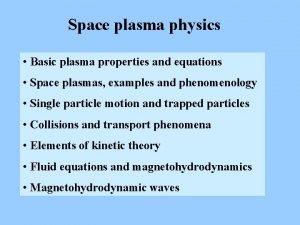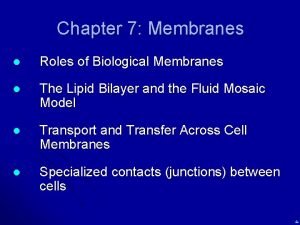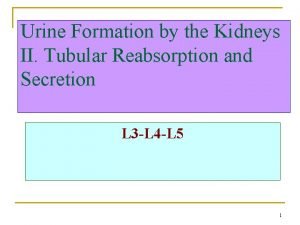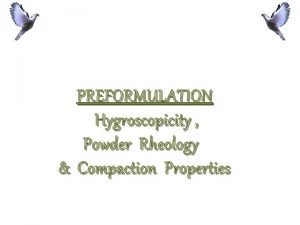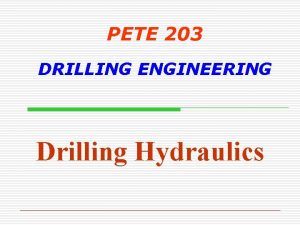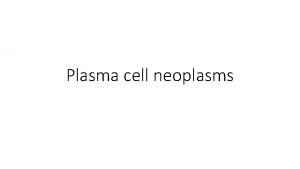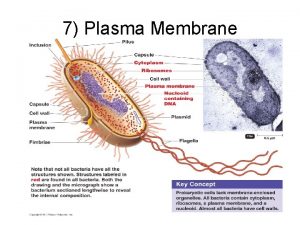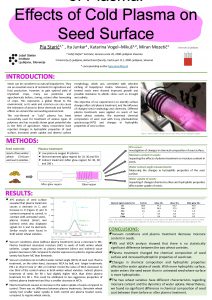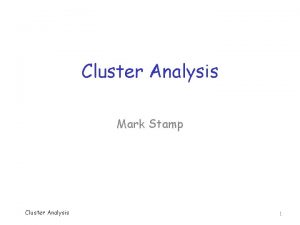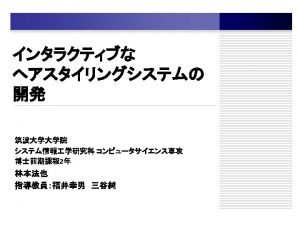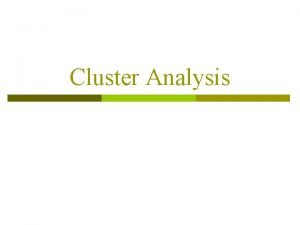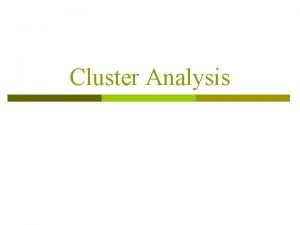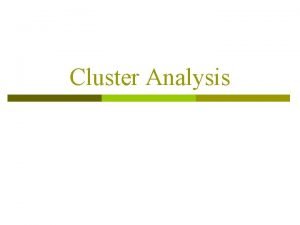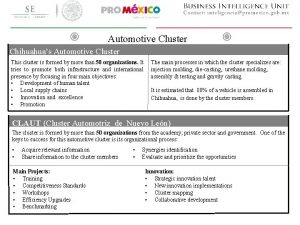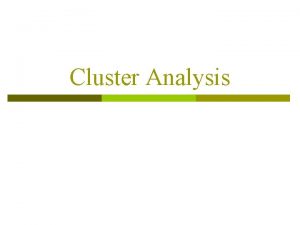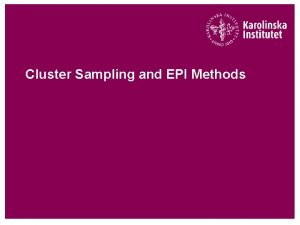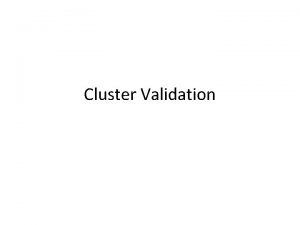Cluster Reveals Properties of Cold Plasma Flow May


![Outflows from the ionosphere Erik Engwall May 15, 2008 Chappell et al. [1987, 2000] Outflows from the ionosphere Erik Engwall May 15, 2008 Chappell et al. [1987, 2000]](https://slidetodoc.com/presentation_image_h2/5e19523d33898826ab65c0a8d12ecf10/image-3.jpg)







![Geographical distribution cm-3 Erik Engwall May 15, 2008 (Engwall et. al, [2006], Paper V) Geographical distribution cm-3 Erik Engwall May 15, 2008 (Engwall et. al, [2006], Paper V)](https://slidetodoc.com/presentation_image_h2/5e19523d33898826ab65c0a8d12ecf10/image-11.jpg)


![Comparison to previous results Cluster study Polar @ 8 RE (Su et al. [1998]) Comparison to previous results Cluster study Polar @ 8 RE (Su et al. [1998])](https://slidetodoc.com/presentation_image_h2/5e19523d33898826ab65c0a8d12ecf10/image-14.jpg)











- Slides: 25

Cluster Reveals Properties of Cold Plasma Flow May 15, 2009 Erik Engwall

Outflows from the ionosphere Vsc ~ 20 -40 V > E ion ~ 0 -10 e. V Erik Engwall May 15, 2008 Chappell et al. [1987, 2000]
![Outflows from the ionosphere Erik Engwall May 15 2008 Chappell et al 1987 2000 Outflows from the ionosphere Erik Engwall May 15, 2008 Chappell et al. [1987, 2000]](https://slidetodoc.com/presentation_image_h2/5e19523d33898826ab65c0a8d12ecf10/image-3.jpg)
Outflows from the ionosphere Erik Engwall May 15, 2008 Chappell et al. [1987, 2000]

Model Wake formation in flowing plasmas Erik Engwall May 15, 2008

Studies of wake formation Ion density (normalized) 150 m 1 0. 8 100 m 0. 6 0. 4 50 m 0 m 0. 2 0 m 50 m 100 m 150 m 200 m 250 m 300 m (Engwall et. al, 2006) Potential [V] 150 m 100 m Erik Engwall May 15, 2008 50 m 0 m 0 m 50 m 100 m 150 m 200 m 250 m 300 m

Model Wake fieldformation assumedintoflowing be in flow direction: Ewake Wake plasmas = g(u, …) u EFW & EDI FGM Velocity calculation cross-validated with CIS in low-energy mode and ASPOC operating. Erik Engwall May 15, 2008

Model Wake fieldformation assumedintoflowing be in flow direction: Ewake Wake plasmas = g(u, …) u EFW & EDI FGM Velocity calculation cross-validated with CIS in low-energy mode and ASPOC operating. The plasma density is obtained from the spacecraft potential (Pedersen et al. , 2008) Erik Engwall May 15, 2008 The outward flux, nu//, is now given! (We cannot separate different ion species, but we see mainly H+)

Statistical study 1 s/c, July - October 2001 -2005, 765. 000 data points Erik Engwall May 15, 2008

Statistical study 1 s/c, July - October 2001 -2005, 765. 000 data points Erik Engwall May 15, 2008

Geographical distribution Erik Engwall May 15, 2008
![Geographical distribution cm3 Erik Engwall May 15 2008 Engwall et al 2006 Paper V Geographical distribution cm-3 Erik Engwall May 15, 2008 (Engwall et. al, [2006], Paper V)](https://slidetodoc.com/presentation_image_h2/5e19523d33898826ab65c0a8d12ecf10/image-11.jpg)
Geographical distribution cm-3 Erik Engwall May 15, 2008 (Engwall et. al, [2006], Paper V)

Outflow properties Erik Engwall May 15, 2008

Solar and magnetic activity § Clear dependence on solar radiation and geomagnetic activity Erik Engwall May 15, 2008 § Driving solar wind parameters are – – Magnitude of the magnetic field Solar wind dynamic pressure, nmv 2
![Comparison to previous results Cluster study Polar 8 RE Su et al 1998 Comparison to previous results Cluster study Polar @ 8 RE (Su et al. [1998])](https://slidetodoc.com/presentation_image_h2/5e19523d33898826ab65c0a8d12ecf10/image-14.jpg)
Comparison to previous results Cluster study Polar @ 8 RE (Su et al. [1998]) Erik Engwall May 15, 2008

Comparison to previous results (Engwall et al. , 2009) Erik Engwall May 15, 2008 Very good agreement to previous values: • Confirms continuation of ionospheric outflows far out in the magnetotail lobes • Ionosphere supplies plasma to magnetosphere • Cold ion outflow dominates

Conclusions § Powerful new method: cold plasma flows inferred from spacecraft wakes. §Cold ions dominate in large parts of the magnetosphere, both in flux and density §Cold plasma outflow constitutes a major part of the net loss from the Earth – 1026 protons/s are lost from the planet through high-latitude low-energy outflow processes. Erik Engwall May 15, 2008 + recent results from Mars Express Cold plasmas around planetary bodies much more important than previously thought

Outflows from the ionosphere Solar cycle <8 RE Satellite missions Cluster Erik Engwall May 15, 2008 Chappell et al. [1987, 2000]

Previous detections in magnetotail E (e. V) Acceleration makes ions visible Cold ions in plasma sheet visible due to high flow speed on Cluster (Sauvaud et al. [2001]) Erik Engwall May 15, 2008 Other examples: • GEOTAIL: Hirahara et al. [1996], Mukai et al. [1994] • Polar: Liemohn et al. [2005]

Previous detections in magnetotail Observations of cold plasma sheet ions when Geotail in eclipse (Seki et al. [2003]). Detection of lowenergy ions (<50 e. V) 9 e. V Erik Engwall May 15, 2008 Cold ions in geomagnetic tail lobes (Engwall et al. [2006], Paper 3)

Geographical distribution cm-3 18 00 Erik Engwall May 15, 2008 12 06 Cross-polar cap potential [Haaland et al. , 2007]

Geomagnetic activity Cluster Akebono DE-1 Erik Engwall May 15, 2008

Model for flow velocity from wake • Unmagnetized ions on wake length scale ⇨ Spurious field is in flow direction ⇨ Ewake = g(u, …) u • Frozen-in conditions apply • EDI data are good ⇨ u┴ = EEDI × B / B 2 We get Ewake = EEFW - EEDI = g u┴ + g u// B/B g and u// can now be obtained from the electric field components of EDI and EFW.

Comparing flow velocities from particle and electric field data The derived velocity from the wake (red) shows good agreement with the corrected velocity for H+ from CODIF (black). Thus, the wake method to derive flow velocity of cold plasma works and can be used in regions where ions are inaccessible to particle detectors.

Measurements from SC 1 and SC 3 High s/c potential will shield out the plasma ions. Few ions will thus reach CIS and the density is underestimated At the same time Efield measurements differ from EDI and EFW. Why? Because of spacecraft wake.

Measurements from SC 4 Artificial spacecraft potential control reduces the potential to +7 V, and some of the H+ ions will become visible! Flow aligned with B, which is expected for outflows in the polar wind. The velocity of the H+ is possible to measure due to low s/c potential. (The lowest velocities are missing due to the instrument low-energy cutoff. )
 Properties of plasma
Properties of plasma Physical properties of cell membrane
Physical properties of cell membrane Glomerular capillary pressure
Glomerular capillary pressure Conn syndrome
Conn syndrome Welcome 1 unit 10 lesson 1
Welcome 1 unit 10 lesson 1 Is theme and central idea the same thing
Is theme and central idea the same thing Art reveals society
Art reveals society Mark twain reveals stage fright
Mark twain reveals stage fright Direct characterization definition
Direct characterization definition The poem reveals three phases of life
The poem reveals three phases of life Jenny hated reading class theme
Jenny hated reading class theme A sustainability report reveals a firm's
A sustainability report reveals a firm's Whats a controlling idea
Whats a controlling idea Stage direction examples
Stage direction examples Reveals that his supporters will be made earls
Reveals that his supporters will be made earls Hamlet act 4 characters
Hamlet act 4 characters The way an author reveals a character's personality
The way an author reveals a character's personality Properties of cold air
Properties of cold air Hci patterns
Hci patterns Intensive and extensive properties
Intensive and extensive properties Chemical property of water
Chemical property of water What is a steady-flow process?
What is a steady-flow process? Powder rheology
Powder rheology Properties of laminar flow
Properties of laminar flow Properties of flow network
Properties of flow network Powder flowing angle
Powder flowing angle
